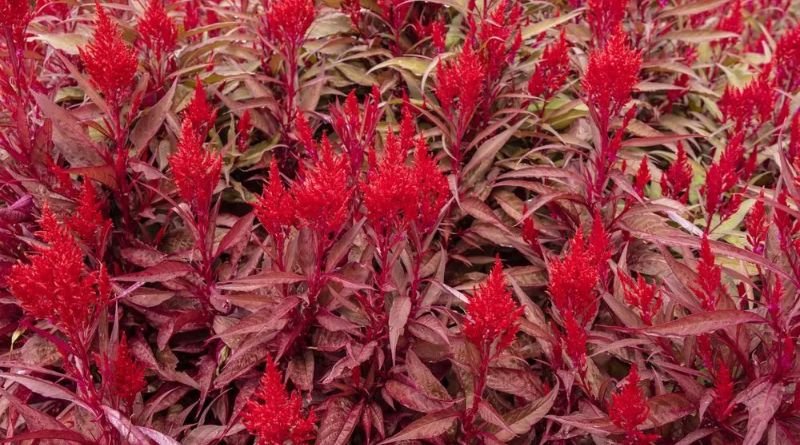The Dragons Breath plant has taken the gardening world by storm, with its unique appearance, bold colors, and impressive ability to thrive in various climates. Known for its vibrant red foliage, the Dragons Breath plant brings a fiery splash of color to gardens, containers, and landscapes. Whether you are an experienced gardener or a beginner, this striking plant is sure to catch your eye and add drama to your outdoor or indoor spaces.
In this article, we will explore everything you need to know about the Dragons Breath plant, including its origin, ideal growing conditions, care requirements, and common issues you may encounter while growing it. We’ll also address frequently asked questions to help you succeed in cultivating this showstopper in your garden.
Table of Contents
What is the Dragons Breath Plant?
The Dragons Breath plant, scientifically known as Iresine herbstii, is a striking ornamental plant famous for its vivid, fiery red to purple foliage. While native to South and Central America, it is now popular in many parts of the world as a houseplant or garden ornamental.
Its deep red leaves are often seen with undertones of purple or maroon, making it a dramatic choice for any garden or indoor space. The Dragons Breath plant can grow up to 3 feet tall, with bushy, compact growth that makes it ideal for both container gardening and as a ground cover in warm climates. Its name, “Dragons Breath,” comes from the intense color of its leaves, which resemble the fiery red hue of a dragon’s flame.
Characteristics of the Dragons Breath Plant
- Size: Typically grows between 18 inches to 3 feet tall, depending on the environment and care.
- Foliage: The plant is admired for its deep red, purple, or maroon leaves. In some varieties, the leaves may have a shimmering or metallic quality that adds to its appeal.
- Flowers: While the plant primarily gains attention for its striking foliage, it can occasionally produce small, inconspicuous flowers. These flowers are not the highlight of the plant and are often overshadowed by the vibrant leaves.
Growing the Dragons Breath Plant
1. Choosing the Right Location
The Dragons Breath plant thrives in bright, indirect light. While it can tolerate some direct sunlight, too much sun may scorch its leaves, causing them to lose their vibrant color or even dry out. If you are growing the plant indoors, place it near a window with filtered sunlight or in a spot where it can receive plenty of natural light without being exposed to the harsh midday sun.
If you are growing the Dragons Breath plant outdoors, choose a spot where the plant can get partial shade, especially in areas with intense summer heat. It will also appreciate some protection from strong winds that might damage its delicate leaves.
2. Soil Requirements
The Dragons Breath plant prefers well-draining, rich soil that is slightly acidic to neutral (pH 6.0 to 7.0). A mix of potting soil with added organic compost or peat moss works well for growing the plant in containers. When growing it in the ground, amend the soil with compost to improve drainage, especially if you live in an area with heavy clay soil.
3. Watering Needs
Like many tropical plants, the Dragons Breath plant enjoys consistent moisture but is sensitive to waterlogged conditions. Water the plant thoroughly whenever the top inch of soil feels dry, but be sure the container or garden bed drains well. In cooler or less humid conditions, you may need to water the plant less frequently, as the soil will retain moisture for longer periods.
If you are growing the Dragons Breath plant outdoors, make sure to water it deeply during hot, dry periods, but avoid watering too often to prevent root rot.
4. Fertilizing the Plant
To promote healthy growth and vibrant foliage, feed the Dragons Breath plant with a balanced liquid fertilizer during the growing season (spring and summer). You can apply a slow-release fertilizer at the start of the growing season to ensure continuous nutrients for the plant. Be careful not to over-fertilize, as too much fertilizer can cause the plant’s leaves to burn or result in excessive leggy growth.
5. Temperature and Humidity Requirements
The Dragons Breath plant thrives in warm temperatures between 65-85°F (18-29°C). It is not frost-tolerant and should be brought indoors or protected in colder climates. If growing the plant indoors, maintain a moderate humidity level, as the Dragons Breath plant appreciates humidity but will adapt to average household humidity levels.
Outdoors, the Dragons Breath plant is best suited for tropical and subtropical climates but can be grown as an annual in regions with cooler temperatures. During the winter months, if you live in a colder climate, bring the plant indoors to prevent frost damage.
6. Pruning and Maintenance
The Dragons Breath plant requires minimal pruning, but it will benefit from occasional trimming to maintain a tidy shape and encourage bushier growth. Prune back any leggy or damaged stems and remove dead leaves to help the plant focus its energy on producing fresh foliage.
You can also pinch back the plant’s top growth to promote branching and a fuller appearance, especially if you’re growing it in a container or as a hedge in your garden.
7. Winter Care
In colder regions, you can either bring the Dragons Breath plant indoors or treat it as an annual, depending on your preferences. If you are growing it in a container, simply bring it indoors when the weather turns cold. If you are growing it outdoors, you will need to dig up the plant and replant it each year, or you can collect cuttings and root them indoors during the winter months.
Common Pests and Diseases
While the Dragons Breath plant is relatively low-maintenance, it is still susceptible to a few common pests and diseases. Some of the most common problems include:
- Aphids: These tiny insects can cause damage to the plant’s leaves by sucking out sap. You can treat aphid infestations with insecticidal soap or a strong stream of water.
- Mealybugs: These pests often appear as cotton-like masses on the plant and can weaken the plant if not addressed. Use insecticidal soap to remove them or wipe them off manually.
- Root Rot: Overwatering or poor drainage can lead to root rot. Make sure to provide proper drainage and avoid watering too frequently.
- Powdery Mildew: This fungal disease appears as white, powdery spots on leaves. If powdery mildew occurs, remove the affected leaves and improve airflow around the plant to reduce humidity.
Benefits of the Dragons Breath Plant
- Aesthetic Appeal: The Dragons Breath plant adds a pop of color to any garden or indoor space, with its deep red foliage creating a dramatic focal point.
- Low Maintenance: This plant is relatively easy to care for, requiring minimal pruning and being resistant to most common pests.
- Versatility: Whether grown in containers, hanging baskets, or as a ground cover, the Dragons Breath plant can be used in various gardening settings and arrangements.
Frequently Asked Questions about the Dragons Breath Plant
1. Is the Dragons Breath plant toxic to pets?
No, the Dragons Breath plant is not considered toxic to pets, but as with all plants, it is best to discourage pets from chewing on the foliage.
2. Can the Dragons Breath plant be grown indoors?
Yes, the Dragons Breath plant can be grown indoors as long as it receives enough light. Place it near a window with indirect sunlight, and be sure to avoid drafts or direct sunlight that may scorch the leaves.
3. How often should I water my Dragons Breath plant?
Water your Dragons Breath plant whenever the top inch of soil feels dry. It’s important not to let the plant sit in standing water, as this can lead to root rot.
4. How can I propagate the Dragons Breath plant?
You can propagate the Dragons Breath plant through stem cuttings. Cut a healthy stem with a few leaves, remove the lower leaves, and place it in water or directly into soil. Once roots form, transplant it into a pot or garden bed.
5. What are the ideal growing conditions for the Dragons Breath plant?
The Dragons Breath plant thrives in well-draining, slightly acidic to neutral soil, bright indirect light, and warm temperatures. It should be protected from frost and extreme cold.
Conclusion
The Dragons Breath plant is a fantastic choice for adding bold color and drama to your garden or indoor space. With its fiery, vibrant leaves and relatively easy care requirements, it’s a plant that can easily become a star in your collection. Whether you grow it indoors as a houseplant or outdoors as a striking garden focal point, the Dragons Breath plant is sure to captivate with its beauty and ease of growth.


